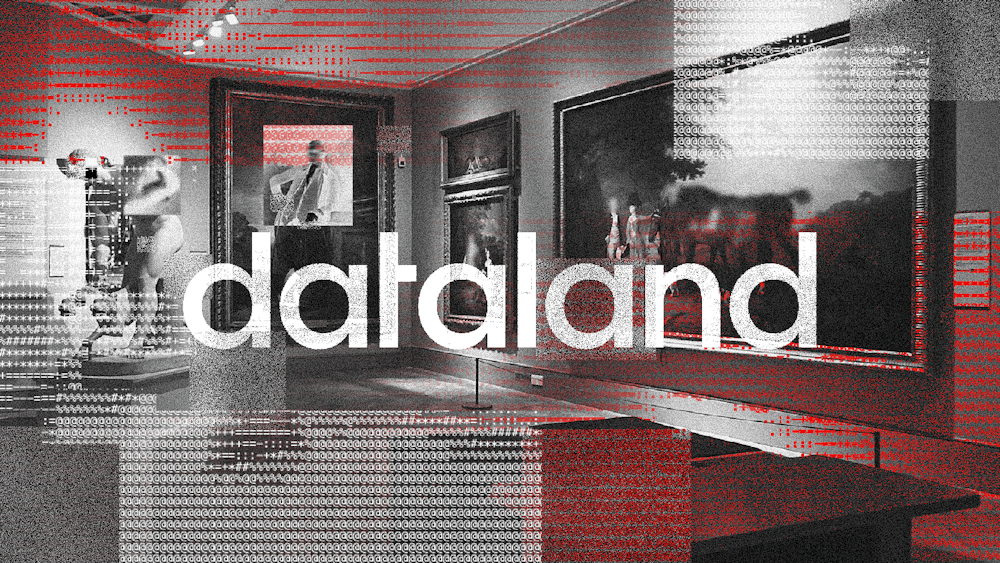I can hardly imagine my pre–COVID–19 life without ChatGPT. Beyond summarizing dense readings and designing practice tests for upcoming midterms, artificial intelligence has crawled its way into the entertainment industry. With AI art gaining traction in mainstream media—for example, through AI–generated profile pictures and fabricated voiceovers of famous celebrities—the question of whether AI should be used in tandem with creative projects has become a point of contention among artists, critics, and the general public.
What does this mean for the future of art at large?
Recent buzz of the world’s first AI museum is taking the conversation of AI’s increased applications in art by storm. DATALAND is defined as “the world’s first museum of AI arts,” a term coined by American–Turkish artist and co–founder of the museum, Refik Anadol. It’s projected to open in 2025 in Los Angeles, with a mission to bridge the intersection between human imagination and machine. DATALAND uses its Large Natural Model, a generative algorithm trained to render nature–based projections using a large database of images and sounds from the natural world. No human intellect is required in the creative process itself, though the ideas of the model are rooted in a manmade idea: the conservation of our planet.
This begs the question: should AI models be used to represent human ideas? After all, the Large Natural Model promulgates a positive message of environmental awareness, though vague in its specificities. The visual output of this model is a multisensory simulation of nature, from the rustling of thousands of leaf species to the booming roars of the savannah. This, on paper, seems like a fascinating experience for visitors who are captivated by the novelty of AI–generated art finally rising to the magnitudes of a fine arts institution.
But I could hardly imagine how an amalgamation of all of these natural senses would harmonize. While it’s an interesting idea at first glance, I can’t fathom how a machine successfully consolidates all of Earth’s living organisms and microbiomes into a single exhibit. Will the algorithm grotesquely merge the anatomies of different species? Most importantly, will the exhibit be well–received by its audience or shunned by the hypocrisy of a man–made tool advocating for the man–free subject of nature?
Though the museum hasn’t opened yet, AI has produced jarring renditions of animals in the past: the upwards hoisting of a cow by helicopter, Smurf cat and strawberry elephant, and rabbit fur elucidated by the Windows–desktop–background–esque splotches of grossly artificial light. On the other hand, AI has successfully deceived many consumers with its use in advertising. Perhaps the future of AI art lies deeply in personal preference, and I am yet to see DATALAND for myself when it opens. That being said, I feel like I could get the same experience if the museum’s website releases a virtual tour of its space.
Regardless of my feelings, the beauty of art is found in its subjectivity. I have a large bias toward traditional media. I need to feel the scratching of chalk pastel on textured paper and the syrupy globs of oil paint on wood–paneled canvas. One person may stare at a small red dot against an empty backdrop and feel the sublime, crushing forces of the universe, while another interprets it as complete bullshit.
DATALAND is simply its own art form: a creative preference contingent on the individual. It doesn’t jeopardize the status of traditional art; instead, it coexists alongside it. After all, DATALAND plans to open adjacent to some of Los Angeles' most prominent cultural venues, taking a front–row seat next to the Museum of Contemporary Art, the Broad Museum, and the Walt Disney Concert Hall.
This development gestures toward our larger context: We live in an era of constant change, the rapid pace of information constantly overwhelming our senses. Technological growth is at the helm of our consumer experiences—the latest phone, rising social media stars, virtual reality. We’ve adapted to the constant influx of new ideas, so why not embrace AI art? As long as computer algorithms aren’t used as a cop–out for creativity but instead as a vessel, it adds to the possible ways artists convey their ideas.
Has painting been superseded by photography? Of course not, and neither will AI. So, hand the robot the paintbrush; it doesn’t mean we still can’t brandish our own.

